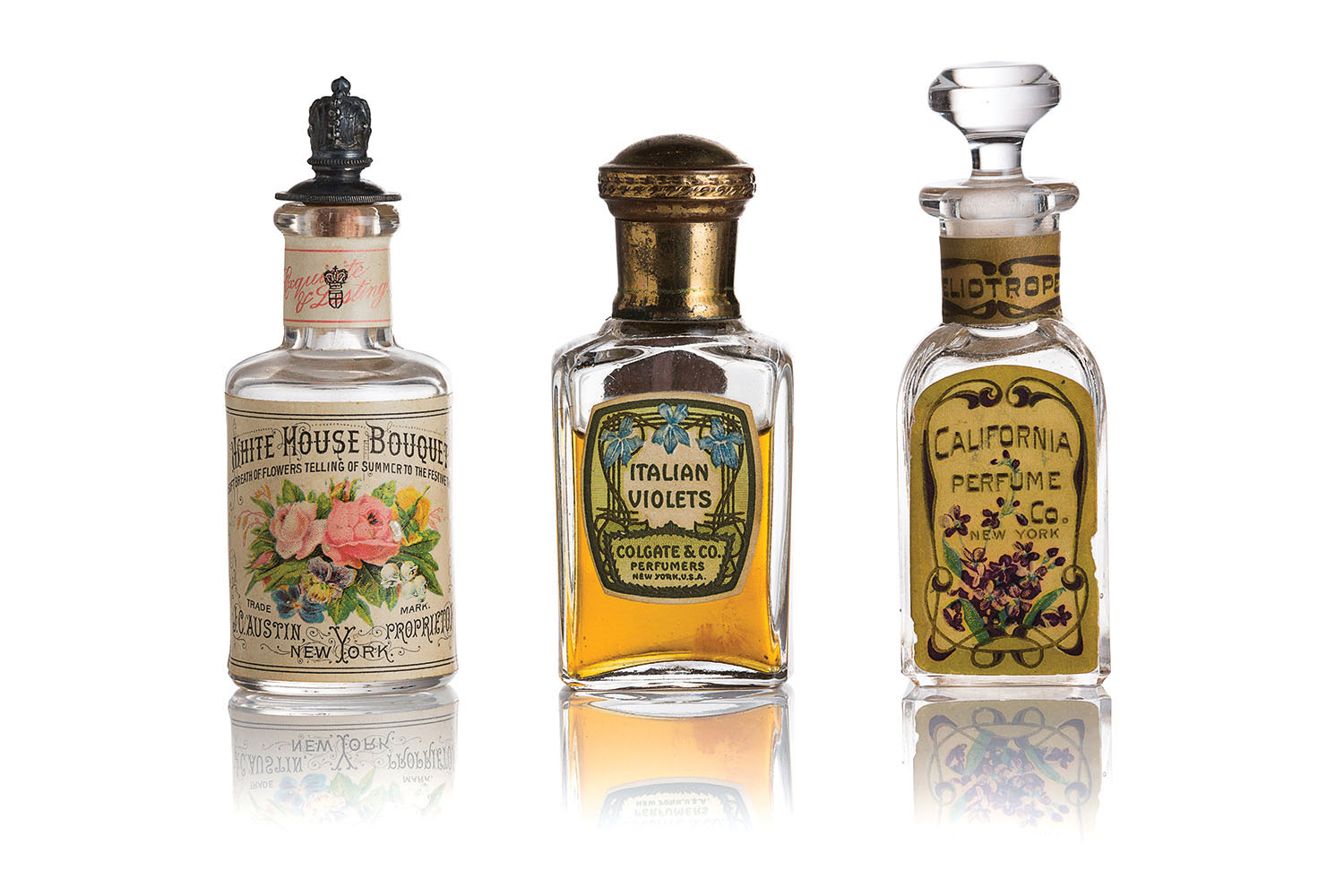
The sharp, earthy aroma of fresh coffee grounds. The refreshing tang of an incoming rainstorm. The underlying hints of lavender and vanilla in a grandmother’s perfume. One sniff throws us back to a unique memory of our own, evoking feelings we may have forgotten we even had.
“Smell reaches the brain more quickly than any of the other stimuli that come from touch, or sight, or hearing,” explains Richard Stamelman, consultant for the traveling Making Scents exhibit and the author of Perfume: Joy, Scandal, Sin — A Cultural History of Fragrance from 1750 to the Present. The quick entry occurs because smell only goes through two synapses in the brain, allowing an instant connection that immediately brings up emotional responses.
Called l’imaginaire, this intense relationship is why fragrance is such an important part of culture and history, used to symbolize power, to portray wealth, and to seduce. Professor emeritus of romance and comparative literatures at Williams College and currently a visiting professor at The College of William and Mary, Stamelman reveals that his study of French poetry led him to the subject.
Writers might describe a scene on the surface: the sights, the sounds. But those are the easier senses. It’s almost impossible to convey in words what something truly smells like. “How poets go about finding the words to explain the wordless, in other words, perfume, is very limited,” says Stamelman. Language, often the tool that connects humans to one another, plays a challenging role in the art of perfume, allowing memory to take over in its place. Where words fail, feelings speak.
Despite these deep layers, fragrance’s power also lies in its accessibility. Our first sense activated at birth, smell follows us wherever we go. Anyone can enjoy it. Fragrance exposes layers of our humanity, and these connections aren’t just for the elite, they’re for everyone.
While his work is concerned with “beliefs, feelings, history, protocols, fashion, and science” — intellectual themes that he says “circle around the experience of perfume” — Stamelman also acknowledges his subject’s most basic appeal. “Smells are essential, and we love them.”
Making Scents: The Art and Passion of Fragrance is a traveling exhibit including interactive scent stations and the display of more than 100 vintage perfume bottles. It shows at the Baker Exhibit Center, North Carolina Arboretum in Asheville (100 Frederick Law Olmsted Way), 9am-5pm daily through September 3. For more information, call 828-665-2492 or see ncarboretum.org.
